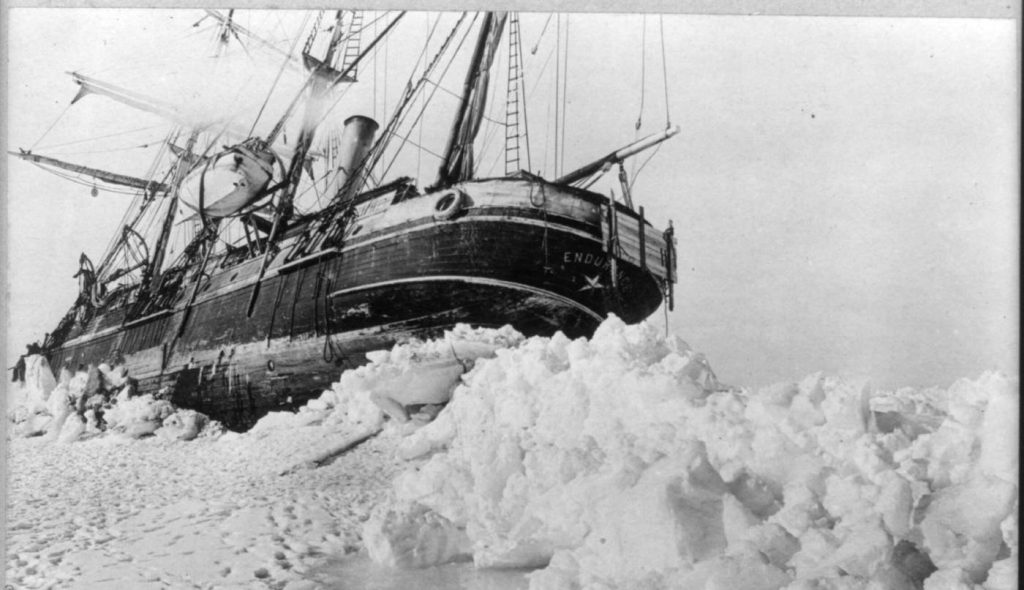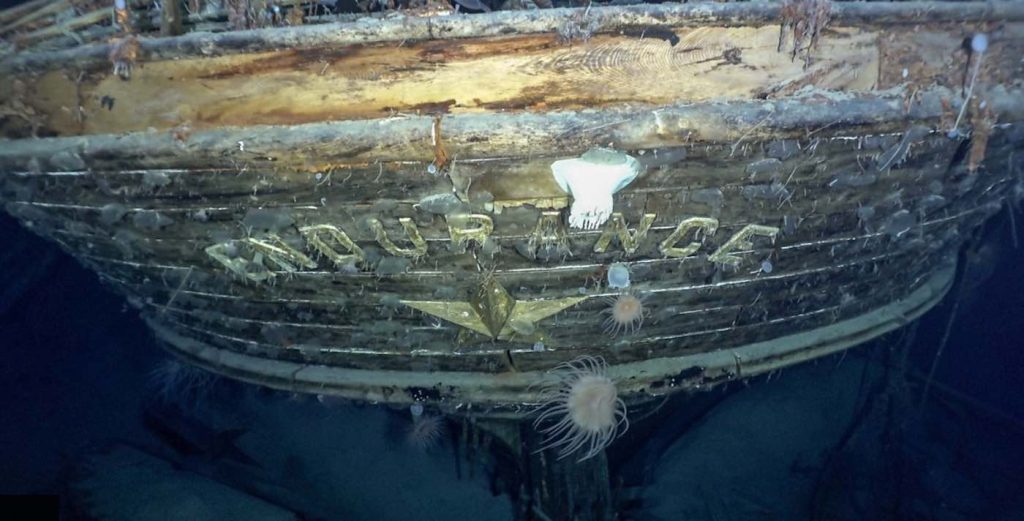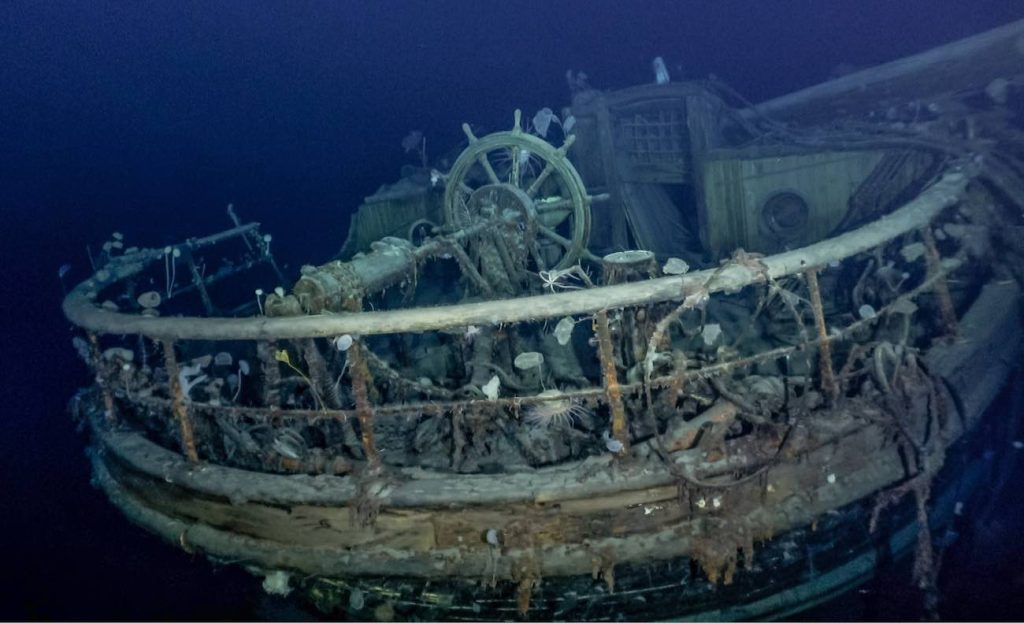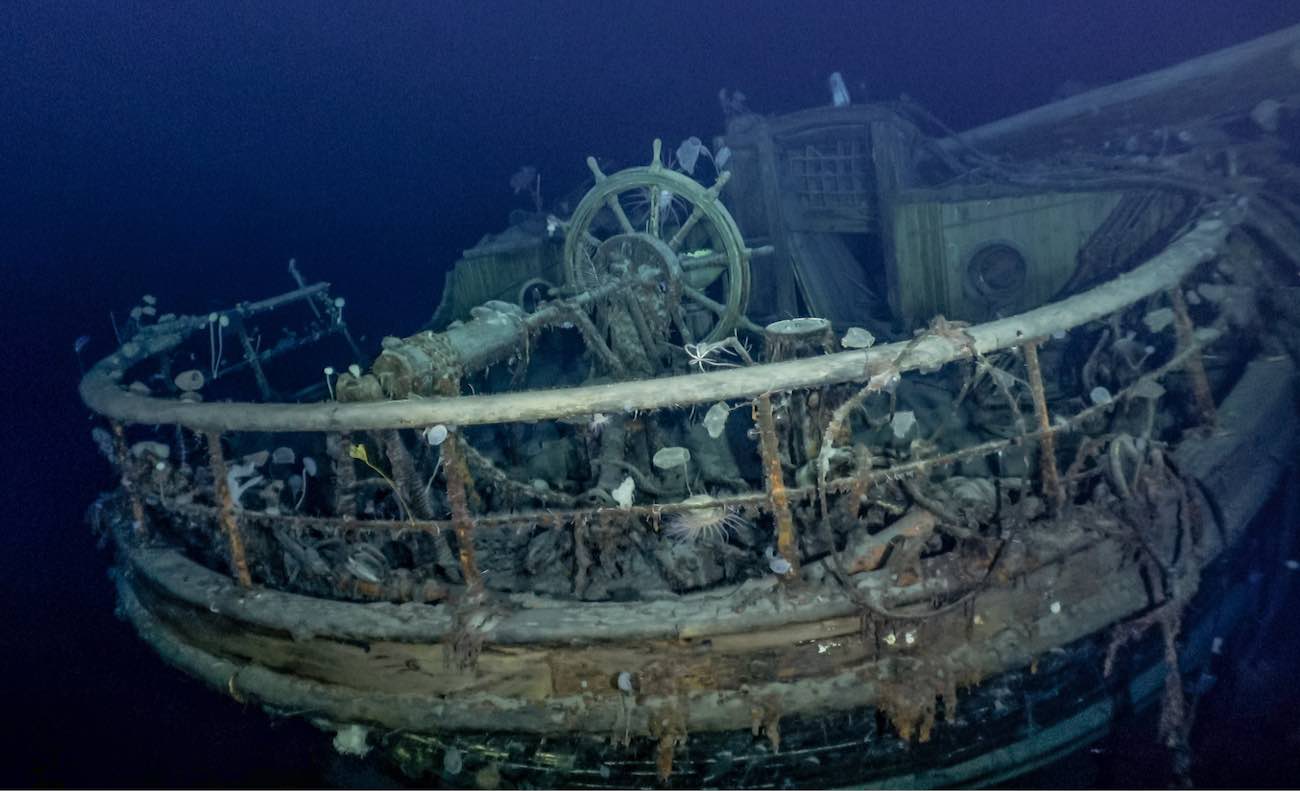
107 years ago, Endurance, the ship of legendary Antarctic explorer Ernest Shackleton went down in the Weddell Sea. On the 100th anniversary of the captain’s burial, it was found.
The ship now sits as a monument in a state of preservation rivaling or exceeding the finest maritime archaeological discoveries.
“We are overwhelmed by our good fortune in having located and captured images of Endurance,” said expedition leader Mensun Bound. “This is by far the finest wooden shipwreck I have ever seen. It is upright, well proud of the seabed, intact, and in a brilliant state of preservation. You can even see ‘Endurance’ arced across the stern, directly below the taffrail.”
Not a single plank, from what the explorers could see, had been disturbed by time or eaten by parasites. Only the damage from when the boat struck the ocean floor, and the hole which caused it to sink in the first place, were visible.
Bound was joined by Dr. John Shear, and together they set out with their colleagues and crew aboard S.A. Agulhas II a South African icebreaker ship to find the wreck. The expedition was called Endurance22 and funded by the Falklands Maritime Heritage Trust.
“The discovery of the wreck is an incredible achievement,” added Shears. “We have successfully completed the world’s most difficult shipwreck search, battling constantly shifting sea-ice, blizzards, and temperatures dropping down to -18C.”

Saturday, when the wreck was found, was the 100th anniversary of Shackleton’s funeral, and the Agulhas II, on route to its port in Cape Town, will stop at the famous captain’s gravesite on South Georgia to pay their respects.
Historian Dan Snow was working with the explorers and described that when Endurance was found the presence of excitement aboard was palpable. “You could hear doors slamming, you could hear people running down the corridors, it was something in the air,” he told the BBC.
Disaster struck, disaster averted.
“Scott for scientific method, Amundsen for speed and efficiency but when disaster strikes and all hope is gone, get down on your knees and pray for Shackleton,” said Sir Raymond Priestley, a contemporary of Shackleton’s, in 1956.
During Shackleton’s previous expedition to Antarctica, he found the South Magnetic Pole, and also became the first person to summit Mount Erebus, the volcano-mountain of Antarctica.
Following up on this success, Shackleton departed England on Endurance in 1914. Upon reaching the Weddell Sea, the ship became stuck in the ice for so long that it froze fast to it. The crew attempted to stay by the boat’s side as it floated with the ice, but on 21 November 1915, the wreck finally slipped beneath the surface.
RELATED: Stunning 2,000-Year-old Glass Bowl is Still Flawless After Archaeologists Dig it Up in Netherlands
After floating on sea ice until April, Shackleton ordered his men into three lifeboats, where they eventually reached Elephant Island, an inhospitable environment. From there, some of the crew set off in the largest of the lifeboats towards South Georgia, a 720 nautical mile journey. They made it, and sent back help for the men remaining on Elephant Island, despite being delayed by the weather three times. Not one soul was lost in the disaster.
“Looking like a ghost ship”
At 10,000 feet (3,000 meters) below the ice-bound sea, Endurance was described as “looking like a ghost ship,” where it sat beyond the reach of any sunlight. While filter feeders had colonized the wreck, no wood-boring worms were found, but the translucent anemones found almost added to its beauty.

MORE: British Museum Unveils Ancient Artifacts Illuminating the World of Stonehenge in New Exhibit
Much of the paint and wood stain could even be seen through the robotic submersible’s camera, which found crockery, a boot, both anchors, and astoundingly even the ship’s steering wheel, as it explored.
Seeing the name Endurance above the five pointed star which is supposed to resemble Polaris was the most special moment, according to Bound.
“I tell you, you would have to be made of stone not to feel a bit squishy at the sight of that star and the name above,” he told the BBC. “You can see a porthole that is Shackleton’s cabin. At that moment, you really do feel the breath of the great man upon the back of your neck.”
CHECK OUT: ‘Most Important Prehistoric Discovery in a Century’ Revealed by British Museum
Species like brittle stars, stalked sea squirt, anemones, and urchins were all filter feeding but not contributing to deterioration.
The ship lies in waters under the International Treaty of Antarctica, and therefore must not be disturbed. No artifacts will be brought to the surface, and it will now be considered a monument.
(WATCH the BBC video showing the ship after all these years.)
SHARE This Brilliant Discovery With Friends…




















